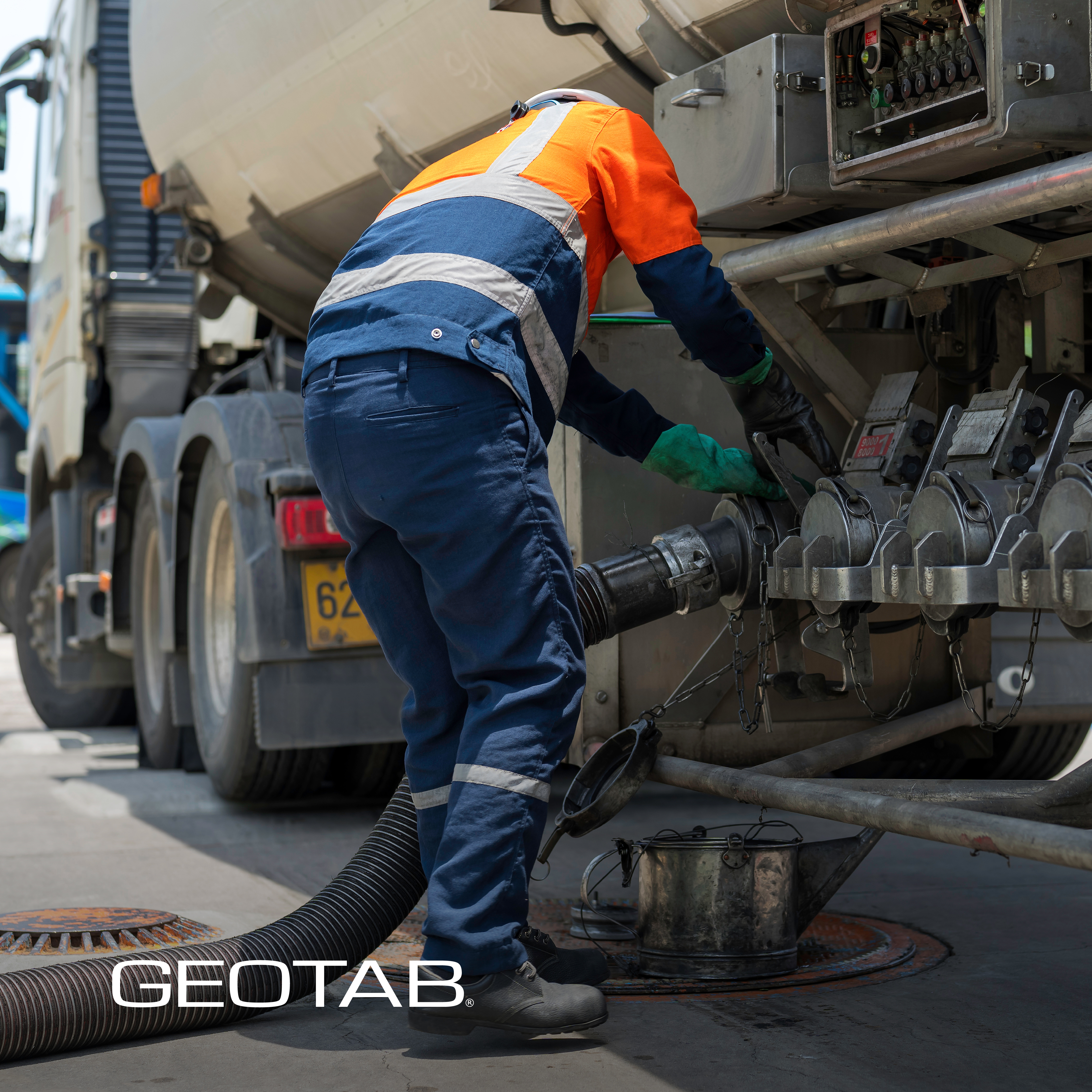Win the truck driver retention battle with technology
Learn how telematics and modern fleet management solutions can address the trucking industry's driver retention challenges. This blog highlights the role of technology in improving driver satisfaction, safety and operational efficiency.
By Geotab Team
Nov 18, 2025

Key Insights
- Driver turnover crisis: Australia’s trucking industry had 28,000 unfilled positions last year, with projections suggesting the problem will get worse.
- Telematics solutions: Technology like automated compliance, real-time alerts and driver scorecards enhances safety, simplifies workflows and improves driver satisfaction.
- Proven impact: Companies using telematics have reported better driver behaviour, streamlined operations and increased retention showcasing the tangible benefits of a driver-first approach.
Australia’s trucking industry faces a persistent challenge in recruiting and hiring skilled drivers.
In fact, the National Road Transport Association estimates that there are 28,000 unfilled positions, with nearly half of trucking businesses (49%) experiencing “severe” or “very severe” difficulty filling driver positions.
The problem is likely to get worse because there are not enough younger drivers to replace those who are nearing retirement. Close to half (47%) of all drivers are now 55 or older, while just 5.2% are under 25 years old. Lengthy and costly training pathways, a lack of industry awareness, and competition from other trades and industries are all contributing to the shortage of new entrants.
Beyond competitive pay, drivers value safety, efficiency and support in their day-to-day roles. By simplifying workflows, enhancing safety and improving the overall driver experience, telematics-enabled fleet management solutions can transform driver retention strategies and position your company as one that puts its drivers first.
.jpg)
Leverage telematics for a driver-centric approach
Picture your drivers being able to start their day with an intuitive in-cab app that provides route information, pre-trip inspections and automated Electronic Work Diary at their fingertips. Throughout the day, real-time alerts warn them of bad weather or heavy traffic, allowing the driver to adjust routes and avoid situations that could compromise safety. This use of fatigue and safety-based technology helps the driver and the operator fulfill their chain of responsibility obligations by demonstrating they are taking all reasonable steps to manage risk.
Video telematics and scorecards provide feedback to enhance their driving skills, while automated compliance tracking reinforces adherence to regulations. This seamless experience eliminates frustrations, improves safety and empowers drivers to focus on the road.
Modern fleet management tools redefine the driver experience by simplifying day-to-day tasks and boosting compliance without added stress. They help fleets not only attract talent but also create work environments where drivers want to stay long term. With nearly 250,000 drivers in Australia, innovative solutions are vital to reverse industry trends, which could worsen as the nation’s road freight needs to grow by around 77 percent by 2050.
By investing in the following, you can demonstrate an understanding of driver needs, as well as foster morale and satisfaction.
ELD automation | Safety scorecards and integrated cameras | Workflow efficiencies | Connected ecosystem |
| A simple yet powerful EWD solution automates compliance requirements, saving drivers time and reducing errors. | These tools provide actionable insights to improve driver behaviour while reinforcing a strong safety culture. | From dispatch communications to route planning, integrated tools streamline operations and make life on the road much easier.
| An open platform and extensive partner network will allow fleets to customise solutions that align with your drivers’ unique needs. |
Five ways technology empowers truck drivers
1. Enhance driver safety and well-being
With safety being a top priority for drivers, AI-enabled dash cameras and telematics solutions promote safer driving through real-time feedback and proactive accident prevention. For example, cameras can alert drivers to potential hazards, while telematics data provides insights into risky behaviours like harsh braking or speeding. These technologies instill confidence among drivers, demonstrating the fleet’s commitment to their safety and well-being.
2. Streamline operations and reduce driver burden
Managing a work diary, compliance paperwork and dispatch messaging can overwhelm drivers. You can simplify these tasks with solutions like an NHVR certified Electronic Work Diary, intuitive workflows and integrated communication systems. By reducing administrative burdens, drivers can focus on driving safely and effectively.
3. Maximise driver earnings and uptime
Unplanned breakdowns and long idle times can disrupt a driver’s earning potential. Through predictive maintenance capabilities and fuel efficiency optimisation you can reduce downtime, enabling drivers to maximise their time on the road. Knowing their livelihood is supported builds trust and loyalty between drivers and fleets.
4. Support training and skill development
Telematics isn’t just about tracking behaviour — it’s a powerful tool for enabling driver coaching by analysing data on performance indicators such as fuel efficiency and safe driving practices. Tailored training based on this data helps drivers improve their skills, boosting confidence and job satisfaction.
5. Optimise compensation and incentives
Using performance data, fleets can create transparent and fair compensation programs, or tap into existing programs such as Geotab Vitality. Through telematic-driven insights managers can track driver scorecards and offer incentives for safe and efficient driving. These individualised performance-based rewards make drivers feel recognised and motivated.
Real-world impact on driver satisfaction and performance
Geotab solutions have already made a tangible difference for many fleets. Companies like ECS Project Logistics, a growing business that mostly serves oil and gas, mining and large infrastructure projects.
Improved safety and compliance for ECS Project Logistics
ECS specialises in moving very large objects through very remote areas. This creates additional safety and workplace challenges, which Geotab’s solutions helped to address.
In the U.S., Northern Logistics and Plastic Express have reported improvements in driver behaviour, operational efficiency and overall satisfaction.
28% boost in driver performance
Northern Logistics leveraged driver scorecards to reward safe driving, fostering a culture of mutual respect and acknowledgment
13% decrease in severe alerts
Plastic Express streamlined compliance processes to make daily workflows easier for drivers.
These examples underscore how technology can bridge the gap between driver retention goals and real-world outcomes.
Win the retention battle by putting drivers first
Drivers are the backbone of the trucking industry. By investing in their safety, streamlining their workflows and ensuring their needs are met, fleets can foster loyalty and long-term success.
Geotab’s open platform, customisable solutions and commitment to continuous improvement not only helps you prioritise your drivers. By utilising innovation to tackle the root causes of driver turnover, like job dissatisfaction, compliance stress and unsafe conditions, Geotab can help you win the driver retention battle. Discover how Geotab not only enhances the driver experience but also future-proofs your operations with leading-edge technology and actionable insights.
Read more about Geotab's heavy transport and logistics solutions
The Geotab Team write about company news.
Related posts
.jpg)

Fuel efficiency techniques every transport operator should know
December 2, 2025
3 minute read

9 strategies to increase fleet fuel efficiency and lower fuel costs
November 28, 2025
3 minute read
Dash cams vs. all-in-one video telematics: the difference and why choose an all-in-one solution
November 19, 2025
3 minute read

Powering what's next: Key takeaways from the Geotab ANZ Partner Summit 2025
October 6, 2025
3 minute read

How AI dash cams for fleets stop distracted driving and deliver true safety gains
September 29, 2025
5 minute read